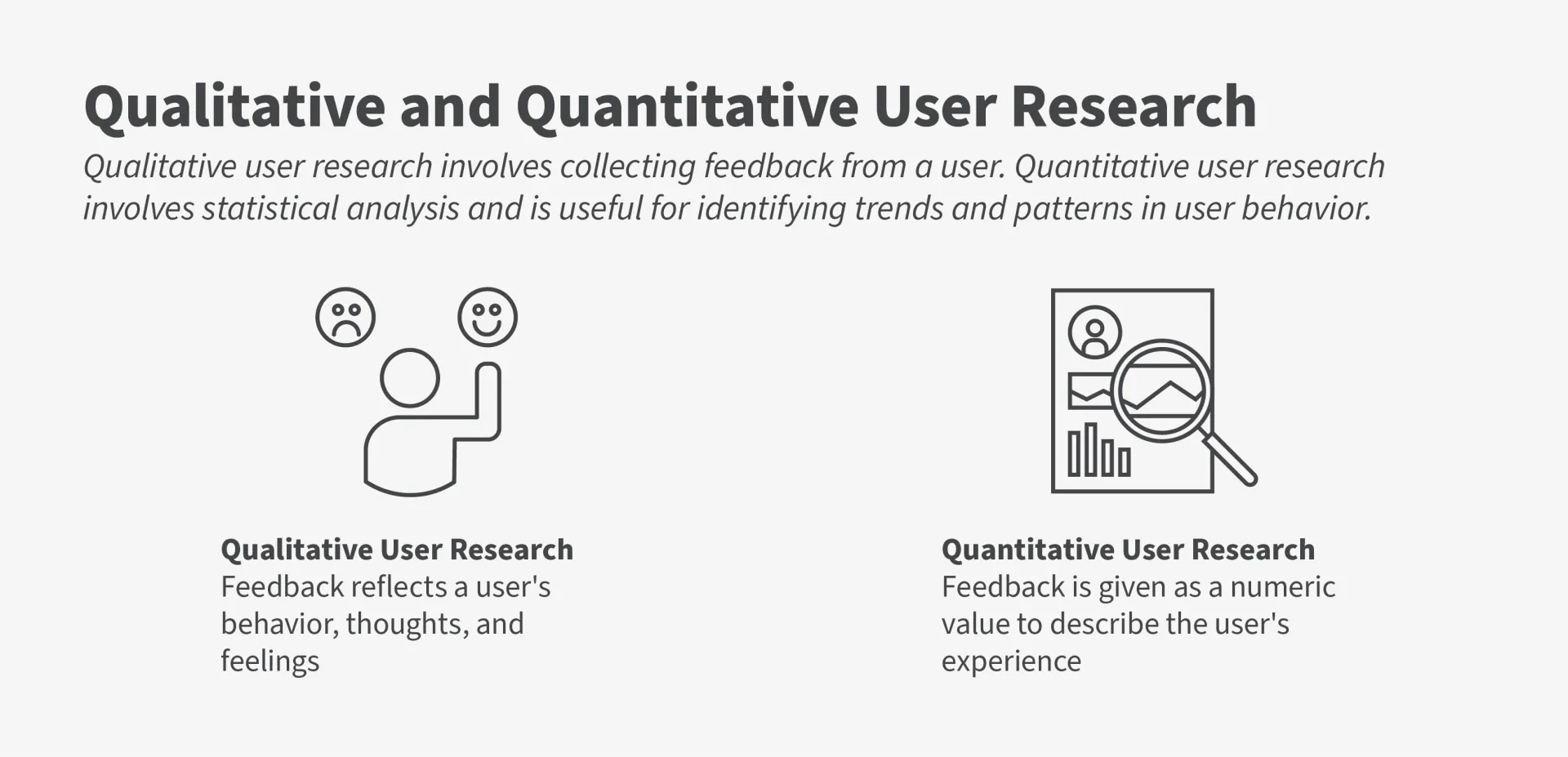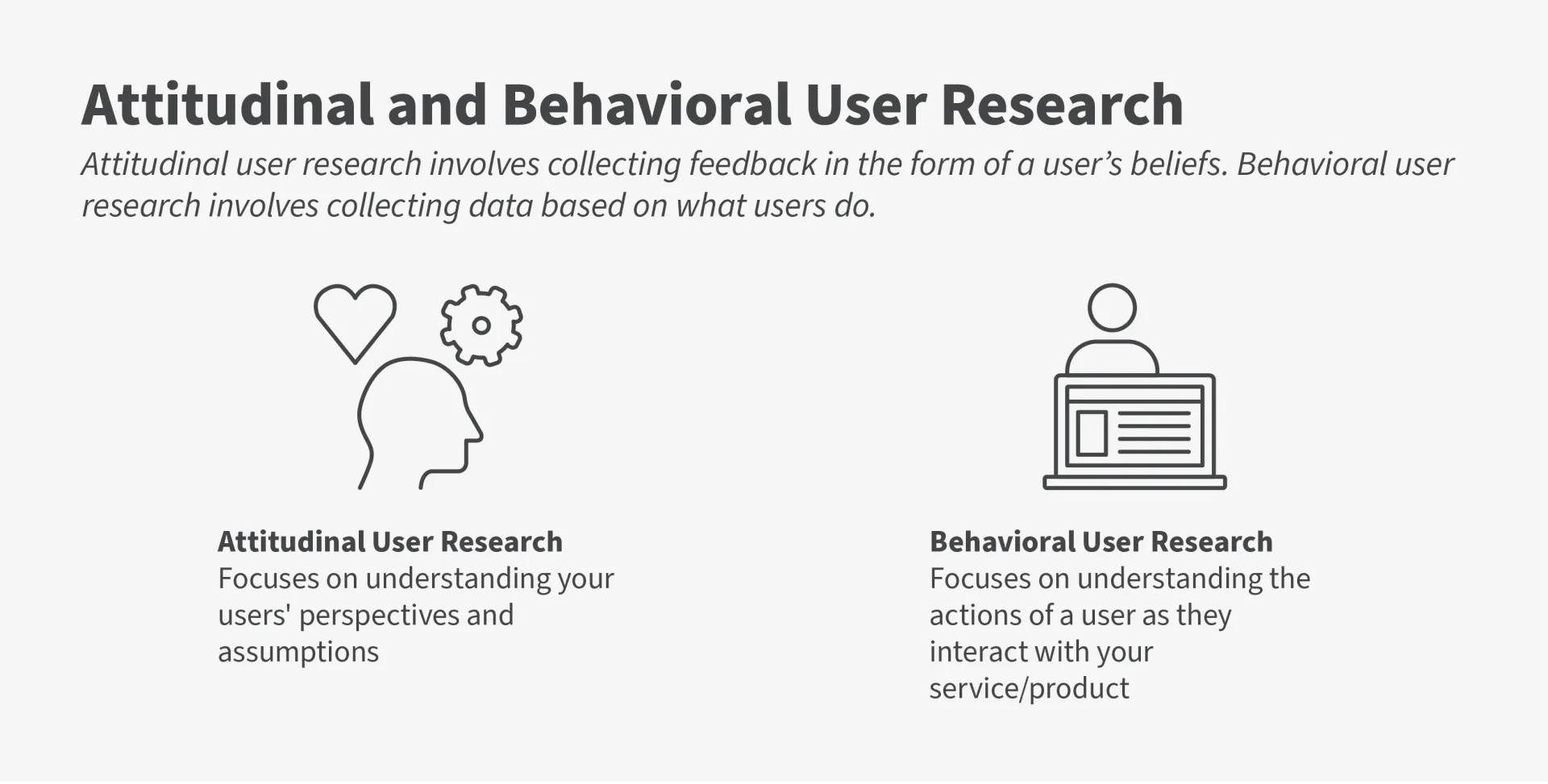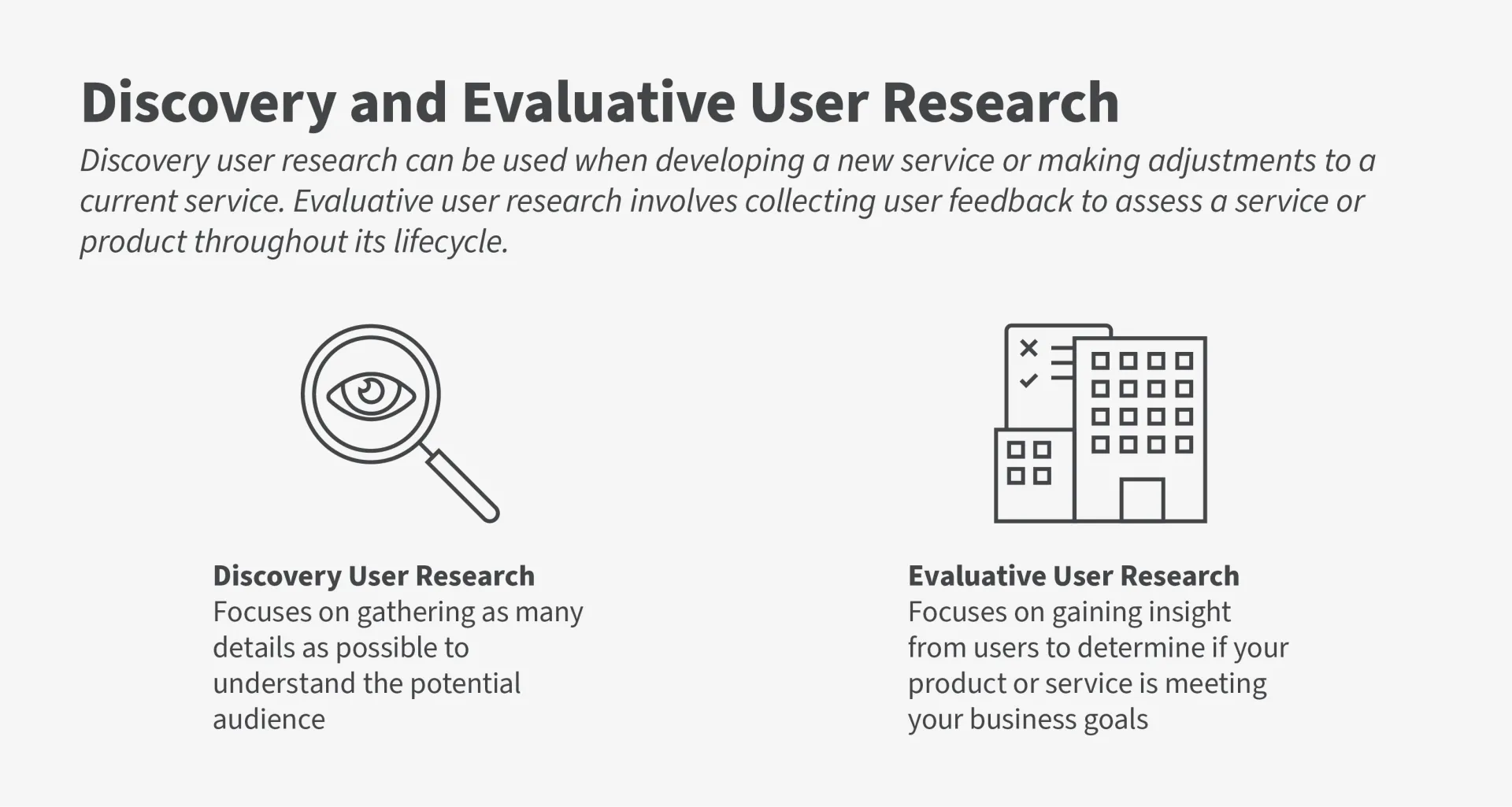Basics of User Research Lesson | 10 Minutes
Lesson Objectives
- Understand common types of user research
- Understand what qualitative and quantitative user research is
- Understand what attitudinal and behavioral user research is
- Understand what discovery and evaluative user research is
Based on your user research goals, you may be aiming to collect a certain type of feedback to help you answer your research questions.
You may be conducting user research before creating a new service, looking to gain insight on how a newly created service is performing, or you may need feedback on an existing service that may need updating.
Whichever the situation is, the type of feedback you want to gather often drives the type of user research you conduct.
What Are Common Types of User Research?
Each different type of user research helps you collect a certain type of feedback. You may find that you need to conduct multiple types of user research to best answer your research questions. Some types of user research will be more effective and efficient in gathering the insights your team is looking for.
Common types of user research are:
- Qualitative user research
- Quantitative user research
- Attitudinal user research
- Behavioral user research
- Discovery user research
- Evaluative user research
Note: The types of user research you can conduct are not rigid in structure. The research method you choose to use when conducting your user research may result in applying more than one type of user research. Often times when you are gathering feedback that covers multiple types of user research you are gaining a more holistic view of your user's experience.
What is Qualitative and Quantitative User Research?
Qualitative User Research
Qualitative user research involves indirectly and/or directly collecting feedback from a user. This type of feedback normally reflects a user's behavior, thoughts, and feelings. You may hear a user directly share their thoughts with you and/or you may observe them indirectly showing their response based on their body language or physical reaction.
Example research question: How do you feel about the effectiveness of our service?
Example research question: Why do you feel you had trouble navigating this site?
Quantitative User Research
Quantitative user research involves collecting insights in the form of numerical data. This can include feedback such as time spent on task and completion rate, but it also includes quantifying a user's experience and perspective. A user may complete a survey where they are asked to rate a service. The feedback is given as a numeric value to describe their experience. This type of data can be more easily used for statistical analysis and is useful for identifying trends and patterns in user behavior.
Example research question: What is the error rate when filling out this form?
Example research question: On a scale from 1 to 10, how likely are you to recommend this service to a friend or family member?
What is Attitudinal and Behavioral User Research?
Attitudinal User Research
Attitudinal user research involves collecting feedback in the form of a user’s beliefs. This type of research focuses on understanding your users' perspectives and assumptions around your organization and its services. You may ask a user to share their mental model (how they would present/sort information) to best understand how they think the information should be displayed.
Example research question: How would you sort the current information on the fact sheet?
Example research question: If you could add any additional information to the fact sheet, what would it be?
Behavioral User Research
Behavioral user research involves collecting data based on what users do. This type of research focuses on understanding the actions of a user as they interact with your service/product and documenting those actions as data to be analyzed and learned from. You may ask a user to complete a task using two different versions of a service so you can observe which version is easier for the user to navigate and understand.
Example research question: Where are users having issues as they interact with our service?
Example research question: When do our users access our services the most?
What is Discovery and Evaluative User Research?
Discovery User Research (also known as exploratory research)
Discovery user research can be used when developing a new service or making adjustments to a current service. It involves collecting a wide range of user information and/or feedback. This type of research focuses on gathering as many details as possible to understand the potential audience and their wants and needs when it comes to your organization's services.
Example research question: Would you use a service that provides “X”? Why? Why not?
Example research question: How could this additional service “Y” help support your needs?
Evaluative User Research
Evaluative user research involves collecting user feedback to assess a service or product throughout its lifecycle. This type of research focuses on gaining insight from users to determine if your product or service is meeting your business goals and how you can improve upon it. You may conduct evaluative user research to continue to develop a concept or to determine if an existing service needs updating.
Example research question: Does the newly prototyped service interaction increase the satisfaction of customers?
Example research question: At what points are users having issues with our service?
In Summary
Knowing and being able to conduct common types of user research gives you the opportunity to be more effective and efficient with your research efforts. When you choose the research type that best fits the data/information you desire, you can seek feedback that more directly answers your research questions and returns better results.
At DHS, we conduct user research to help us understand our users’ needs, goals, and behaviors so we can use that information to better understand their experience with our organizations and create services and products that better serve them.
Resources
Article:
US Web Design System: Design Principles (USWDS)
Can You Crowdsource Your User Experience Research? (Digital.gov)
Web Resource:
18F User Experience Design Guide: Research Types (18F)
18F User Experience Design Guide: Research (18F)
User Research Service Manual (GOV.UK)
Download:
Customer Experience Center of Excellence Playbook (GSA)
Video:



